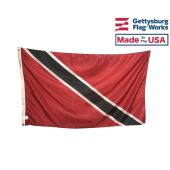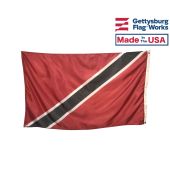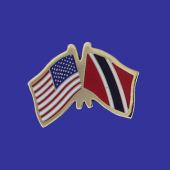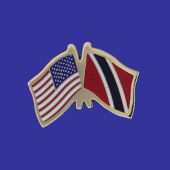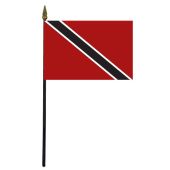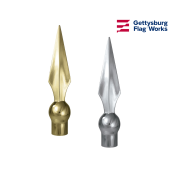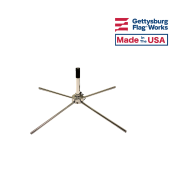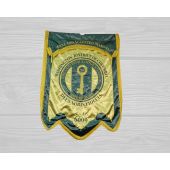Trinidad and Tobago Flags

Flag of Trinidad and Tobago
The flag of Trinidad and Tobago, like that of many other nations in the Caribbean, has only been in use for a little more than half of a century. It was chosen to replace the previous Trinidad and Tobago flag and represent the new nation when it gained its independence from the British Empire in the decades after the second world war.
- Capital of Trinidad & Tobago: Port-of-Spain
- Area of Trinidad & Tobago: 5,128 sq. km
- Languages used in Trinidad & Tobago: English (official), Hindi, French, Spanish, Chinese
- Religions in Trinidad & Tobago: Roman Catholic, Hindu, Anglican, Baptist, Pentecostal, Seventh Day Adventist, other Christian, Muslim
Colors and Symbolism of the Flag of Trinidad and Tobago
The flag of Trinidad and Tobago features a solid red field that is diagonally bisected by a black stripe with a white border. The black band runs from the upper hoist side of the flag to the lower fly side. The red field was intended to be reminiscent of fire, which was understood as a symbol of courage and valor. The black represented the earth and the dedication of the nation's people. The white border around that stripe represents water and purity.
History of the Flag of Trinidad and Tobago
The current flag is not the first Trinidad flag. That honor goes to the colonial Trinidad flag, which was given to the islands during their time in the British Empire. The flag resembled many other colonial flags. It had a solid blue field that was decorated with the Union Jack in the flag's canton and the seal of Trinidad and Tobago in the fly. That seal depicted a ship arriving in port near a mountain in tribute to the geography of the islands.
Trinidad and Tobago began to work towards their independence from Britain after the second world war reached its conclusion. The government began to look for a new flag as part of their efforts, and it eventually settled on a submission from Carlisle Chang. The national independence committee formally adopted the design as the Trinidad and Tobago flag in 1962. The design was also adapted for use in many other flags associated with the national government, including the nation's naval ensign and Prime Minister's standard. Chang's design proved to be popular with the people of Trinidad and Tobago, and it has not been changed since it was first adopted to represent the islands on the world stage.
